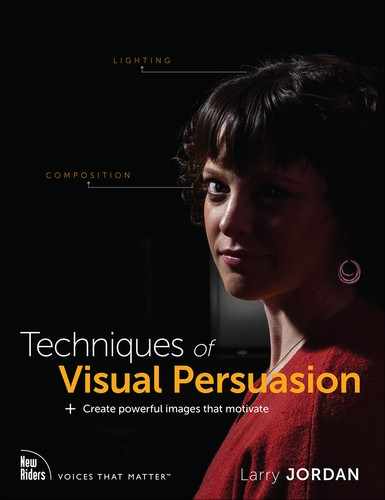Section 1
Persuasion Fundamentals

Section Goals
To communicate effectively today, we need to consider how a message looks, as well as what a message says. My goal is to get you thinking about images and design as part of your day-to-day communications, focusing on visuals as much as content. This doesn’t mean you need to be an artist, because I certainly am not. Rather, I want to help you understand how the principles of design and media production can help you communicate more persuasively.
In this first section, we will cover fundamental concepts of persuasion and images. Once we cover the theory, we’ll spend the rest of the book turning these ideas into action. The chapters in this section are:
 Chapter 1: The Power of Persuasion. What makes something persuasive? This also introduces two key concepts: defining your audience and the Call to Action.
Chapter 1: The Power of Persuasion. What makes something persuasive? This also introduces two key concepts: defining your audience and the Call to Action. Chapter 2: Persuasive Visuals. This explains how images work, how audiences perceive images, and how we manipulate emotional content through camera placement and framing.
Chapter 2: Persuasive Visuals. This explains how images work, how audiences perceive images, and how we manipulate emotional content through camera placement and framing. Chapter 3: Persuasive Writing. This explains what a story is, how to write to support images, and what makes a word powerful.
Chapter 3: Persuasive Writing. This explains what a story is, how to write to support images, and what makes a word powerful. Chapter 4: Persuasive Fonts. Fonts evoke emotions. This illustrates how to use fonts that reinforce the story you are telling.
Chapter 4: Persuasive Fonts. Fonts evoke emotions. This illustrates how to use fonts that reinforce the story you are telling. Chapter 5: Persuasive Colors. Colors persuade subliminally. This shows what color is, the emotions it contains, and how to use color to enhance your visuals.
Chapter 5: Persuasive Colors. Colors persuade subliminally. This shows what color is, the emotions it contains, and how to use color to enhance your visuals.
Four Fundamental Themes
 Persuasion is a choice we ask each individual viewer to make.
Persuasion is a choice we ask each individual viewer to make. To deliver our message, we must first attract and hold a viewer’s attention.
To deliver our message, we must first attract and hold a viewer’s attention. For greatest effect, a persuasive message must contain a cogent story, delivered with emotion, targeted at a specific audience, and end with a clear Call to Action.
For greatest effect, a persuasive message must contain a cogent story, delivered with emotion, targeted at a specific audience, and end with a clear Call to Action. The Six Priorities and the Rule of Thirds provide guidelines we can use to effectively capture and retain the eye of the viewer.
The Six Priorities and the Rule of Thirds provide guidelines we can use to effectively capture and retain the eye of the viewer.
The Six Priorities
These determine where the eye looks first in an image:
Movement
Focus
Difference
Brighter
Bigger
In front
